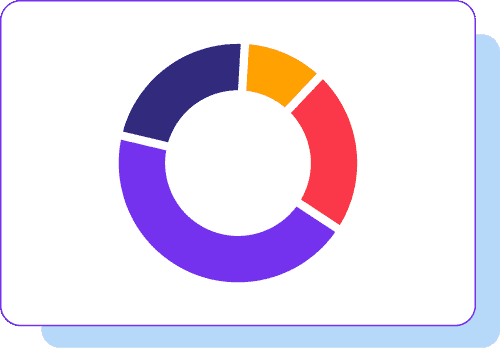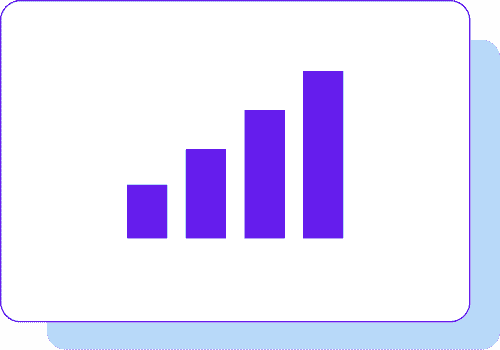In the bustling arena of digital marketing, where algorithms evolve, and trends shift in the blink of an eye, the heartbeat that sustains a brand’s vitality is undeniably audience engagement. It’s not just a metric; it’s the heartbeat, the rhythm that orchestrates the dance between brand and consumer.
In this installment of the Digital Mastery series, we illuminate the profound significance of audience engagement, laying bare the reasons why it stands as the linchpin of successful digital campaigns.
The Significance of Audience Engagement
1. Building Trust and Loyalty
Picture this: an audience that not only listens but actively participates, forging a bond of trust that transcends transactions. Engaged audiences are more than consumers; they are loyal advocates who vouch for your brand, establishing a trust reservoir that bolsters your digital presence.
2. Enhancing Brand Recall
In the vast digital expanse, where attention is a prized currency, maintaining a constant presence in your audience’s consciousness is paramount. Active engagement ensures that your brand remains not just visible but memorable, creating an indelible mark that outshines the fleeting impressions of competitors.
3. Conversion Catalyst
Engagement isn’t a mere precursor; it’s the catalyst that propels your audience toward conversion. Whether it’s making a purchase, subscribing to newsletters, or sharing content, an engaged audience is inherently more inclined to respond to your calls-to-action, transforming digital interactions into tangible results.
4. Feedback and Improvement
In the dynamic realm of digital marketing, insights are gold. Actively engaging with your audience opens a two-way street, where their feedback becomes a compass guiding your strategies. This constant loop of communication is the secret sauce for refining campaigns, products, and overall brand positioning.
Hashtag Generator
My Hashtag Generator is a tool tailored for individuals and businesses seeking to enhance their online visibility. By selecting an industry, specifying the desired number of hashtags, and choosing a preferred social media platform, users can effortlessly generate a curated set of trending and industry-specific hashtags.
For now, it only covers the Beauty, Automotive, and Fitness sectors; I will add more industries in the future.
Hashtag Generator
Understanding Your Audience

Creating User Personas
The Art of Persona Crafting
User personas are the compass that guides your digital ship. They aren’t just profiles; they are living, breathing representations of your audience. Start by identifying key demographics, interests, and pain points. Who are they? What motivates them? What challenges do they face? The more detailed, the better.
Example Persona: Sarah, the Savvy Shopper
| Persona Attribute | Details |
|---|---|
| Demographics | Age: 28<br>Occupation: Marketing Specialist |
| Interests | Online shopping, sustainable living |
| Challenges | Limited time, budget-conscious |
| Tech Affinity | Social media, e-commerce platforms |
| Goals | Finding deals, eco-friendly products |
2. Aligning Content with Personas
Understanding your audience goes beyond demographics. Dive into their behaviors and preferences. For Sarah, crafting content around budget-friendly shopping tips, eco-friendly product reviews, and time-saving hacks resonates. Tailor your messaging, visuals, and even the tone of your content to align seamlessly with the characteristics of your personas.
Analysing User Behavior: Insights from Analytics
1. Analytics Unveiled
Analytics isn’t just about numbers; it’s a narrative waiting to be deciphered. Dive into the analytics of your website, social media, and email campaigns. What pages do they frequent? What content do they engage with the most? Unearth patterns and trends that unveil the story of your audience’s digital journey.
Example Analytics Metrics for Sarah:
- Most Visited Pages: Sustainable product pages, budget-friendly guides
- Preferred Content Format: Engages more with video content
- Peak Engagement Times: Evenings after work hours and weekends
2. Iterative Insights for Continuous Improvement
Analytics isn’t a one-time affair. Regularly revisit and refine your strategies based on insights. If Sarah engages more with video content, consider incorporating more videos into your content calendar. Continuous improvement, guided by analytics, ensures your strategies remain finely tuned to your audience’s evolving preferences.
Feedback Loops: The Art of Listening to Your Audience
1. Opening Channels of Communication
Your audience has opinions, and they want to be heard. Establish channels for feedback—social media polls, surveys, or even direct messages. Actively encourage them to share their thoughts, suggestions, and grievances. These insights are gold, shaping not just your content but the overall user experience.
Example Feedback Loop for Sarah:
- Feedback Request: “What sustainable products would you like us to review?”
- Response: Requests for reviews on eco-friendly clothing, household items
- Action: Plan content and reviews based on audience requests
2. Implementing Feedback: Turning Insights into Action
Feedback without action is a missed opportunity. Show your audience that their opinions matter by implementing their suggestions. Whether it’s creating content based on their requests or making improvements to your products/services, demonstrating responsiveness builds a sense of partnership with your audience.
As we delve into the intricacies of understanding your audience, remember that these strategies aren’t static. User personas, analytics, and feedback are dynamic tools that evolve with your audience. Let this exploration be the foundation for building not just a consumer base but a community where every interaction is a dialogue, and every piece of content is crafted with a nuanced understanding of your audience’s needs and preferences.
Social Media Engagement Strategies

Crafting Compelling Social Media Content
1. The Art of Storytelling in Social Media
Social media isn’t just a platform; it’s a canvas for your brand. Craft compelling stories that resonate with your audience’s values and aspirations. Whether through captivating captions, visual storytelling, or user-generated content, every post should contribute to the larger story your brand is telling.
Example Content Theme: Sarah’s Sustainable Living Journey
Share snippets of Sarah’s journey toward sustainable living—her eco-friendly purchases, challenges she overcomes, and tips she discovers. Use visuals and captions that invite your audience to join her on this journey, fostering a sense of community around shared values.
2. Interactive Posts for Engagement
Encourage participation through interactive posts. Pose questions, run polls, or host challenges. For Sarah, this could involve asking about her audience’s favorite sustainable brands, running a poll on eco-friendly lifestyle habits, or challenging them to share their creative upcycling ideas.
Example Interactive Post: “What’s your go-to sustainable swap? Share a picture or comment below!”
The Power of Visuals: Images, Infographics, and Videos
1. Visual Appeal for Maximum Impact
Images and videos speak volumes in the scroll-happy world of social media. Ensure your visuals are not just eye-catching but aligned with your brand identity. For Sarah, vibrant images of eco-friendly products, visually appealing infographics on sustainable living tips, and engaging videos of her eco-conscious lifestyle can be the cornerstone of your visual strategy.
2. Behind-the-Scenes Glimpses
Humanise your brand by offering glimpses behind the curtain. Share behind-the-scenes content of Sarah’s sustainable living routines, her favorite eco-friendly products, or her experiences attending events promoting sustainable practices. This adds authenticity and a personal touch to your brand.
Example Behind-the-Scenes Post: “A sneak peek into Sarah’s eco-friendly shopping spree. Swipe left to see her favorite sustainable finds!”
Community Building: Fostering Connections on Social Platforms
1. Establishing a Digital Community Hub
Your social media platforms aren’t just broadcast channels; they’re community hubs. Create spaces where your audience can connect, share experiences, and support each other. Consider starting groups, using branded hashtags, or creating themed events that align with Sarah’s sustainable living journey.
2. Responding Promptly and Authentically
Engagement is a two-way street. Respond to comments, direct messages, and mentions promptly and authentically. For Sarah, this means actively engaging with her audience’s comments on her sustainable living posts, answering questions, and expressing gratitude for their contributions.
Example Response: “Thanks for sharing your eco-friendly gardening tips, [User]. I love how our community is full of green enthusiasts! 🌿”
Live Engagement: Live Content
1. Real-Time Connection through Live Sessions
Leverage live sessions to connect with your audience in real-time. Whether it’s Q&A sessions, live tutorials, or sharing updates, live content provides an immediate and authentic connection. For Sarah, live sessions can involve sharing her current sustainable living challenges, providing tips, and interacting directly with her audience.
2. Announce Live Sessions in Advance
Build anticipation by announcing live sessions in advance. Create engaging teasers or countdown posts leading up to the live event. For Sarah, this could involve a sneak peek into what she’ll be discussing, encouraging her audience to mark their calendars.
Example Teaser Post: “🎥 Exciting news! Join me live this Friday as I share my favorite sustainable lifestyle hacks and answer your eco-friendly questions. Save the date! 🌍”
Table for Social Media Content Calendar
| Date | Content Theme | Type | Engagement Strategy |
|---|---|---|---|
| 2023-03-01 | Sustainable Shopping Showcase | Image Carousel | Ask followers to share their recent eco-friendly purchases. |
| 2023-03-05 | Poll: Favorite Eco Brands | Poll | Engage followers by asking about their preferred sustainable brands. |
| 2023-03-10 | Live Q&A on Sustainable Living | Live Session | Announce in advance, encouraging audience questions and participation. |
| 2023-03-15 | Behind-the-Scenes of Eco Event | Video | Share a video providing a behind-the-scenes look at an eco-friendly event. |
| 2023-03-20 | Interactive Upcycling Challenge | Challenge | Encourage followers to participate in a creative upcycling challenge. |
Table 2: Sample Social Media Content Calendar for Sustainable Living Theme
As we navigate the strategies for social media engagement, envision your brand’s social platforms as more than mere promotional spaces. They’re dynamic ecosystems where your audience actively participates, shares, and connects. The next phase of our journey will explore the world of interactive content, where user participation takes center stage. Get ready to elevate engagement through quizzes, polls, and other interactive delights!
Interactive Content for Audience Participation
Quizzes, Polls, and Surveys: Encouraging Participation
1. The Power of Quizzes
Quizzes are not just a fun pastime; they are potent engagement tools. Craft quizzes that align with Sarah’s sustainable living theme. For instance, a “How Eco-Friendly Are You?” quiz can not only entertain but also educate your audience about sustainable practices. Use visually appealing graphics and ensure the questions resonate with your audience.
Example Quiz: “Discover Your Green Living Score!”
| Question | Answer Options |
|---|---|
| How do you commute daily? | a) Walk or bike b) Public transport c) Car |
| Where do you source your groceries? | a) Local markets b) Organic stores c) Conventional supermarkets |
| How often do you recycle? | a) Always b) Occasionally c) Rarely |
| What’s your preferred sustainable product? | a) Reusable water bottles b) Eco-friendly clothing c) Solar-powered gadgets |
Table 3: Sample Questions for “Discover Your Green Living Score!” Quiz
2. Polls for Instant Feedback
Polls are a quick and effective way to gauge your audience’s opinions. Create polls that tap into their preferences related to sustainable living. This not only sparks engagement but also provides valuable insights into their interests.
Example Poll: “Which Eco-Friendly Product Would You Like Us to Review Next?”
| Options |
|---|
| Reusable kitchen utensils |
| Solar-powered home gadgets |
| Sustainable beauty and skincare |
| Eco-friendly fashion trends |
Table 4: Options for “Which Eco-Friendly Product Would You Like Us to Review Next?” Poll
Contests and Giveaways: Creating Buzz and Excitement
1. Crafting Irresistible Contests
Contests and giveaways are magnets for engagement. Align them with Sarah’s sustainable living journey. For instance, a “Best Upcycling Idea” contest encourages your audience to showcase their creativity while promoting eco-conscious practices. Specify clear participation guidelines and deadlines.
Example Contest: “Upcycle Challenge – Turn Old Items into Eco Masterpieces!”
| Participation Guidelines |
|---|
| Share a picture/video of your upcycling project on Instagram Use #EcoUpcycleChallenge in your post Tag our account (@YourBrand) in your post Deadline: [Date] |
Table 5: Participation Guidelines for “Upcycle Challenge – Turn Old Items into Eco Masterpieces!” Contest
2. Giveaways with Purpose
Giveaways not only generate excitement but also allow you to showcase your commitment to sustainability. Partner with eco-friendly brands for giveaway prizes. Ensure participants take eco-friendly actions, such as following sustainable accounts, to qualify.
Example Giveaway: “Win a Sustainable Living Starter Kit!”
| Entry Requirements |
|---|
| Follow our account (@YourBrand) |
| Tag 2 friends in the comments |
| Share this post on your story |
| Bonus: Share a tip for sustainable living in the comments |
Table 6: Entry Requirements for “Win a Sustainable Living Starter Kit!” Giveaway
As we venture into the realm of interactive content, remember that participation is the key. Tailor these interactive elements to not only entertain your audience but also to deepen their connection with your brand.
Maximising Engagement with Hashtags
Hashtags transcend being mere trendy symbols; they emerge as potent tools for expanding your content’s reach and fostering engagement. Within this section, we’ll delve into the art and science of strategically using hashtags to connect with your audience, using Sarah’s sustainable living business as an example.

Understanding the Power of Hashtags
Discoverability: Think of hashtags as virtual filing systems, making your content discoverable to users interested in specific topics. Choose relevant hashtags that align with your content and industry.
Trend Participation: Joining trending hashtags allows your content to become part of larger conversations. Stay updated on trending topics within your industry and tailor your content to align with these trends.
Categorisation: Hashtags categorize your content, making it easier for users to find and engage with. Create branded hashtags to encourage user-generated content and community participation.
Best Practices for Using Hashtags
Platform-Specific Strategies: Different platforms have distinct hashtag usage patterns. Research and adapt your hashtag strategy based on the platform to maximize effectiveness.
Balance Quantity and Relevance: While using popular and broad hashtags can increase visibility, also include niche and specific hashtags relevant to your content. This helps target a more engaged audience.
Create Branded Hashtags: Develop unique hashtags associated with your brand or campaigns. Encourage your audience to use these hashtags, fostering a sense of community and brand loyalty.
Example from Sarah’s Sustainable Living Business:
Sarah, the eco-conscious entrepreneur, incorporates hashtags like #GreenLivingJoy and #SustainableSarah to align with her sustainable living theme. These branded hashtags not only categorize her content but also encourage her audience to participate in the broader conversation on eco-friendly practices.
Table: Hashtag Strategies for Major Platforms
| Platform | Hashtag Strategy | Optimum Number of Hashtags | Top Performing Hashtags |
|---|---|---|---|
| Utilize a mix of popular, niche, and branded hashtags. | 9-15 | #InstaGood, #Love, #Fashion | |
| Join relevant trending hashtags and use industry-specific tags. | 2-3 | #COVID19, #BlackLivesMatter, #TechTuesday | |
| Focus on professional and industry-related hashtags. | 3-5 | #Leadership, #Business, #LinkedInMarketing | |
| Incorporate a few broad and relevant hashtags in your posts. | 1-2 | #ThrowbackThursday, #MotivationMonday, #FeelGoodFriday | |
| TikTok | Explore trending challenges and use popular hashtags. | 3-5 | #ForYou, #TikTokChallenge, #DanceChallenge |
| Include descriptive and niche-specific hashtags in pins. | 5-10 | #DIY, #HomeDecor, #Travel |
Measuring Hashtag Performance
Analytics Tools: Leverage platform-specific analytics tools to measure the performance of your hashtags. Track reach, engagement, and user interactions associated with each hashtag.
Experiment and Adjust: Regularly experiment with different hashtags and analyze their impact on your content’s performance. Adjust your strategy based on the insights gained from analytics.
Incorporating a thoughtful hashtag strategy into your content calendar enhances discoverability, increases engagement, and strengthens your brand presence.
Incorporating Trends and Events into Your Social Media Content Calendar
In this section, we’ll explore the dynamic realm of integrating Trends and Events into your Social Media Content Calendar, using Sarah’s sustainable living business as a guiding example. Remaining relevant in the fast-paced digital landscape requires a keen eye for trends and a strategic approach to leverage events that resonate with your audience.
Staying Relevant
Remaining relevant on social media involves more than just consistently posting content. It requires an understanding of current trends, industry happenings, and cultural events. Here’s how you can stay in the loop:
Monitor Industry Trends: Keep a close eye on industry news, emerging technologies, and shifts in consumer behavior. This awareness allows you to align your content with what’s current and impactful.
Social Listening: Actively engage in social listening to understand what your audience is talking about. Tools like Brandwatch and Mention can help you monitor brand mentions and industry conversations.
Follow Influencers and Thought Leaders: Identify influencers and thought leaders in your industry. Follow their content to stay informed about discussions and trends that matter to your audience.
Example from Sarah’s Sustainable Living Business
Sarah stays ahead in the sustainability space by closely monitoring trends in eco-friendly products, zero-waste living, and green innovations. By keeping an eye on influencers like environmental activists and sustainable lifestyle experts, she ensures her content reflects the latest developments and resonates with her audience.
Tools for Trend Analysis
To effectively incorporate trends into your content strategy, consider using specialized tools for trend analysis. These tools provide insights into what’s buzzing in your industry and help you capitalize on relevant conversations. Some notable tools include:
Google Trends: Discover trending searches and topics on Google. Use this information to tailor your content to what people are actively searching for.
BuzzSumo: Identify trending topics and the most shared content in your industry. BuzzSumo helps you understand what resonates with your audience.
Trendspottr: Leverage real-time trend analysis with Trendspottr. This tool predicts emerging trends, allowing you to stay ahead of the curve.
Table: Tools For Trend Analysis
| Tool | Description |
|---|---|
| Google Trends | Explore trending searches and topics on Google to tailor your content. |
| BuzzSumo | Identify trending topics and highly shared content in your industry. |
| Trendspottr | Leverage real-time trend analysis to predict emerging trends. |
Engagement Tactics
To maximize audience engagement, define specific tactics tailored to your business goals. Whether it’s responding to comments, initiating conversations, or running interactive campaigns, choose tactics that align with your unique business identity. Here’s a platform-specific breakdown of engagement tactics:
| Platform | Engagement Tactics | Alignment |
|---|---|---|
| Respond to comments and encourage sharing | Customer engagement, Relationship building | |
| Initiate professional discussions and networking | Thought leadership, Industry connection | |
| Quora | Provide insightful answers and engage in discussions | Thought leadership, Knowledge sharing |
| Participate in relevant subreddits and discussions | Community engagement, Content sharing | |
| TikTok | Encourage user-generated content and challenges | Viral trends, Community participation |
| Snapchat | Run behind-the-scenes campaigns and polls | Authenticity, User interaction |
| Create and share visually appealing pins | Visual storytelling, Lifestyle connection | |
| YouTube | Engage with comments and create interactive content | Video interaction, Community building |
| Participate in trending topics and hashtag campaigns | Real-time updates, Brand visibility | |
| Host live sessions, polls, and community events | Community building, Audience interaction |
Testing and Experimentation
Embracing experimentation in social media marketing is essential for innovation, growth, and adaptive strategies. Experimentation allows businesses to explore new content formats, engagement strategies, and audience interactions. Key principles of experimentation include:
Data-Driven Decision-Making: Base strategic decisions on data obtained from A/B testing and experimentation. This ensures that adjustments are informed and have a higher likelihood of success.
Iterative Approach: Adopt an iterative approach to social media marketing. Continuously refine strategies based on insights gained from A/B testing, analytics, and ongoing experimentation.
Flexibility: Maintain flexibility in strategies. Social media landscapes are dynamic, and what works today may need adjustments tomorrow. Businesses that adapt quickly to changing circumstances can stay ahead of the curve.
A/B Testing Strategies
A/B testing involves comparing two variations of a strategy to determine which performs better. This method is applicable to content, ad creatives, posting times, and other elements. Key elements to test and examples include:
| A/B Testing Elements | Examples |
|---|---|
| Content Elements | Headlines, Visuals, Call-to-action buttons |
| Posting Times | Morning vs. Afternoon posting times |
| Ad Creatives | Different variations of ad copy |
Adjusting Strategies Based on Results
Data-driven decision-making, an iterative approach, and flexibility are core principles for adjusting strategies based on results. Here’s how you can apply these principles:
| Decision-Making Approach | Core Principles |
|---|---|
| Data-Driven Decisions | A/B test results, Analytics insights |
| Iterative Approach | Continuous refinement, Adaptability |
| Flexibility | Agility in strategy adjustments |
Monitoring and Analytics
Utilizing Analytics Tools
Select analytics tools that align with your business goals and provide insights into key performance indicators. Platforms like Google Analytics, Facebook Insights, and Twitter Analytics offer valuable data. Key metrics to monitor include:
| Key Metrics | Monitoring Aspects |
|---|---|
| Engagement Rates | Likes, Comments, Shares |
| Reach and Impressions | Visibility metrics |
| Conversion Rates | Goal-specific conversion metrics |
Making Data-Driven Decisions
Interpreting data effectively is crucial for making informed decisions. Understand the story that the metrics are telling, identify successful strategies, and areas for improvement. The continuous adjustment based on data leads to ongoing improvement and adaptation to changing trends.
Social Media Metrics and Terms for Data Analysis
| Metric/Term | Definition |
|---|---|
| Engagement Rate | (Engagements/Reach or Impressions) x 100 |
| Click-Through Rate (CTR) | (Clicks/Impressions) x 100 |
| Conversion Rate | (Conversions/Clicks) x 100 |
| Impressions | Total number of times a post has been displayed, regardless of engagement |
| Reach | Total number of unique users who have seen a post |
| Likes | Number of users who indicated they enjoyed the content by clicking the “Like” button |
| Shares | Number of times a post has been shared by users, extending its reach beyond the original audience |
| Comments | Number of user-generated comments on a post |
| Follower Growth Rate | ((New Followers – Lost Followers) / Total Followers at the beginning of the period) x 100 |
| Virality | (Shares/Reach) x 100 |
| Sentiment Analysis | Evaluation of the sentiment expressed in comments or mentions, indicating whether it’s positive, negative, or neutral |
| Bounce Rate | Percentage of users who navigate away from the site after viewing only one page, relevant for website traffic from social media |
Conclusion
In this installment of the Digital Mastery Series, we’ve explored the multifaceted world of social media strategy through the lens of Sarah’s sustainable living business. From interactive quizzes and engaging polls to hashtag optimization and adaptive strategies, we’ve witnessed the power of tailored content in fostering community, driving engagement, and amplifying brand values.
Key Takeaways:
- Tailoring interactive content to your brand’s theme deepens audience connection.
- Strategic hashtag use enhances content discoverability and community participation.
- A/B testing and data-driven decisions empower continuous refinement and innovation.
- Consistent brand representation, coupled with adaptability, builds authenticity.
- Staying informed about trends and leveraging new features ensures long-term relevance.
Engage with more insights and strategies by exploring my upcoming articles in the Digital Mastery Series. Elevate your digital presence and stay ahead in the ever-evolving landscape of digital marketing!















